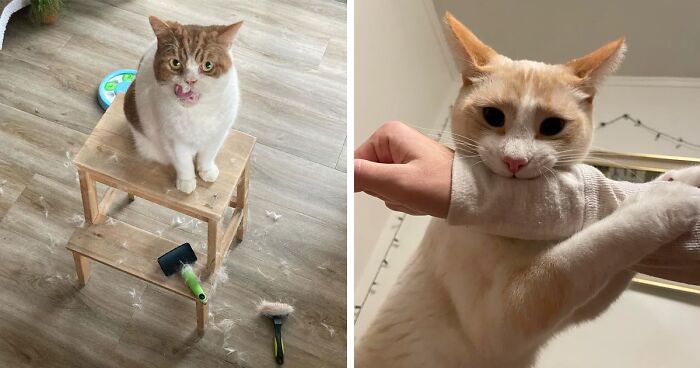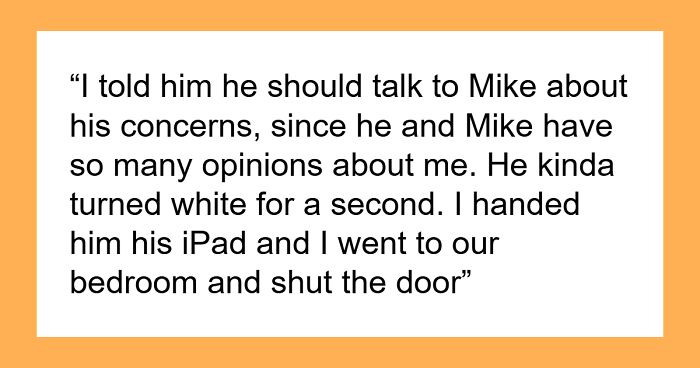Cats are known for their meticulous self-grooming, but sometimes those cleaning sessions turn into full-blown attacks. Brushing, a seemingly harmless activity can turn your sweet kitty into a hissing, swatting furball.
The frustration is real for cat owners. After all, you just want a clean, mat-free feline. Unfortunately, many misunderstand why this aggressive behavior happens. Is it just a bad attitude, or is your cat trying to send you a message?
- Cats may attack during grooming due to pain, fear, or overstimulation.
- Understanding a cat's body language can prevent grooming aggression.
- Early positive reinforcement and short sessions help with grooming.
Let’s dive into the reasons behind these grooming battles and learn how to make brushing time a positive experience for both of you.
The information provided herein is for informational purposes only. Please refer to our disclaimer for more details..
Why Do Cats Attack During Grooming?
Cats are fascinating creatures, but their behavior can sometimes puzzle us. Grooming should be enjoyable…so why do some felines turn into ferocious tigers at the sight of a brush?
Well, there are a few reasons, and understanding them is the first step to helping your cat feel more comfortable.
Pain or Discomfort
Sometimes, the attack isn’t personal. If your cat has an underlying medical condition like arthritis, sore teeth, or skin issues, even the gentlest grooming can be painful. Imagine trying to comb through knotted hair if your scalp was super sensitive – ouch! It’s best to have your vet rule out any medical causes first.
Fear or Anxiety
Cats might be small animals, but they’re also mighty hunters. Being handled – especially if it’s forceful or they weren’t used to it as kittens – can trigger their fear instincts.
Past negative experiences with grooming, like accidental tugs or a trip to a stressful groomer, can also linger in your cat’s memory. If your cat seems anxious or fearful, the best thing to do may be to walk away and give them space.
We need to go slow, offer lots of treats, and make it a positive experience. Sometimes, pheromone diffusers or sprays can help reduce their overall anxiety about handling and grooming.
Overstimulation
Think of it like a tickle attack that goes on too long. Even if your cat loves the initial brushing sensation, some kitties are quickly overwhelmed. It’s like their brain sends a message: “Enough is enough!” and they lash out to stop petting or brushing. Short grooming sessions and taking breaks are super important for these cats. Just like humans, cats have a certain threshold for how much stimulation they can tolerate.
Misdirected Play
Remember, cats are natural predators! Sometimes, combs and brushes moving across their fur look more like a fun toy than a grooming tool. Your playful pouncer might ambush the brush out of pure hunting instinct.
Redirecting their playful energy towards an actual cat toy can help, and will get those hunting urges safely satisfied. If your cat wants to play rough, having a nice sturdy scratching post with different types of scratching surfaces nearby might help them get some energy out before grooming sessions.
Identifying the Signs of Impending Aggression
I see a lot of cases where cat owners just don’t get signals. I mean, cats are complex creatures, right? But they don’t lash out without a reason they usually give us clues that they’re uncomfortable, overstimulated, or scared. It’s up to us as owners to pick up on these signals so things don’t escalate. Understanding your cat’s individual tolerance level is important!
Body Language Cues
- A twitching or thrashing tail is a classic sign of agitation. A completely stiff tail can also mean your cat’s about to go on the defensive.
- Watch their ears! If those ears flatten back against their head, things are getting serious. It’s like they’re trying to make themselves smaller and avoid confrontation but if that doesn’t work, get ready!
- When a cat’s fur starts to ripple or twitch, take it as a warning. This is often linked to overstimulation, meaning they’ve had enough of whatever’s happening, whether it’s petting or loud sounds.
- Those big, black eyes are pretty expressive. If their pupils are blown wide, it means they’re feeling anxious, stressed, or possibly even excited in a hunting kind of way. Remember, even positive excitement can quickly turn into a playful attempt to attack if your cat doesn’t have an outlet for that energy.
- A tense body crouched low, or an arched back with raised fur usually means the cat is feeling defensive and might strike if you push things further. Remember, this defensiveness could be a learned response if they were handled aggressively by previous owners.
- Often your cat will begin to subtly extend a claw or two as if they’re getting ready to pounce or swat.
Vocalization
- Hissing and Spits: Think of these as a universal “back off” signal. We all know what a hiss means! Sometimes there might be a spit involved it’s just a louder way to show they mean business.
- Moans and Cries: Sometimes a low, mournful cry or meow can mean the cat is hurting, or deeply uncomfortable. Don’t dismiss these noises, especially if your cat has a sensitive medical issue and grooming might be painful. If the cries continue, stop and consult your veterinarian.
Strategies to Reduce Aggressive Behaviour During Grooming
Cats – sometimes even the cuddly ones – can turn into little tigers when you break out the brush. As a veterinarian and a cat owner myself, I know this struggle well. It’s frustrating, but don’t worry; there are ways to make grooming less stressful for both you and your feline friend.
Understanding the Pet Aggression
For starters, it’s important to understand why this happens. Cats can get defensive if they’re not used to handling, or if past grooming sessions have been painful (think mats or tangles). They might also be signaling discomfort, or simply overstimulated. Even the sweetest cat gently brushed in the wrong direction of their hair cat can lead to an attack.
Prevention is Key
- Early Start: Ideally, you’ll get your kitten used to brushing and handling from a young age. This is especially important for long haired breeds who will need more frequent grooming as adults.
- Positive Reinforcement: Always reward your cat with treats and praise when they’re cooperative. That way, they’ll start associating grooming time with yummy snacks and happy vibes. You can even try leaving a favorite toy or a small pile of treats near their food bowl to distract them while you start brushing.
Slow and Steady
- Short Sessions: Keep your grooming sessions short, especially in the beginning. As your cat gets more comfortable, you can gradually increase the time.
- Read Their Signals: Pay close attention to your cat’s body language. If you see a swishing tail, twitching skin, flattened ears, those are signs to back off. Never punish your cat for showing these signals – that will only make them more fearful.
- Favorite Areas: Focus on the spots your cat really enjoys being touched, like around the head or neck. Avoid areas that seem to make them uncomfortable at first.
The Right Tools
- Gentle Touch: Cats who are sensitive or overstimulated might enjoy the soft, massaging sensation of a grooming glove instead of a traditional brush. The gentle touch might even cause them to purr with contentment!
- Soft Brushes: A brush with soft rubber bristles, like the KONG Zoom Groom, is a great choice. It removes loose hair effectively and feels good on most cats’ skin.
- Nail Clipping: Before you brush, always make sure your cat’s nails are trimmed. Those little daggers can hurt if they feel threatened!
Build Up the Experience
Here’s my step-by-step approach that has helped plenty of anxious kitties:
- Create a Calm Space: Choose a quiet spot away from distractions.
- Let Them Explore: Let your cat sniff the brush and even rub their cheeks on it to leave their scent, making it less scary.
- Start with Gentle Touch: Begin by just petting them like normal, slowly incorporating the brush into the petting session. Start with their back and tail base, working your way up very gently.
- Watch for Stress Signs: Keep an eye out for a tense posture, swishing tail, or dilated pupils. If you see those, take a break!
- Reward, Reward, Reward: Praise your cat throughout and follow up with their favorite treats after every successful session.
Important Note: If your cat remains really aggressive and difficult to handle, that might be a sign of an underlying medical issue or skin infection causing pain.
What About Feral Cats?
While you may never be brushing a feral cat, sometimes we do end up with cats that haven’t had the kindest past or a lot of human socialization. It’s possible your cat has a similar background, so here are a few tips if you suspect this is why your cat hates grooming:
- Move Slowly: With a potentially feral cat, everything should be done at an even slower pace. Pet your cat in areas they enjoy, and only when they seem receptive and relaxed.
- Safe Space: Create a safe space for your cat where they feel secure, this could be a box with a cozy blanket or a high perch. Make sure they don’t feel trapped and always have an escape route.
What to Do When Your Cat Bites or Scratches
Stay Calm
I know what you’re thinking…it’s easier said than done, but the most important thing in a cat attack is to stay calm. Yelling or making sudden movements can make your cat even more agitated. Try to take a few slow breaths and focus on disengaging safely.
Remember, cats are small, and though their scratches and bites are painful, the situation is often more stressful for them than it is dangerous for you.
Disengage Safely
So, what’s the catch? Don’t pull away if your cat bites or latches on! That can trigger their prey drive even more. Instead, try gently easing towards them, it might confuse them enough to let go.
If that doesn’t work, a distraction might be your best bet. Grab a toy, or a blanket, or even just make a sudden noise to startle your cat and give yourself a moment to escape.
Give Your Kitten Space
Sometimes the best solution is just to retreat. This might seem counterintuitive but sometimes, if you force a stressed cat to stay in a situation they are finding scary or painful, it can make them lash out even more aggressively. If you can, leave the room and close the door behind you. Your cat needs time to cool off – and you probably do too!
There’s a chance that an upset cat might even have a quick lick and groom to self-soothe, which can help them calm down before you try handling them again. Don’t attempt to handle your cat again until both you and they have had a chance to calm down completely
When to Seek Professional Help
If your cat is frequently attacking, causing serious injuries, or if the behavior seems completely unprovoked, it’s time to call in reinforcements. Veterinarians and cat behaviorists have a ton of experience with situations like this. They can help you figure out the root cause of the aggression – whether it’s medical, behavioral, or even if your cat might be at risk of a stroke (especially in senior cats). It’s important to react quickly if the aggression is out of character for your cat because it could signal something medically serious.
Final Thoughts
Grooming your cat doesn’t have to be a battleground. Understanding why your kitty gets aggressive – whether it’s pain, fear, or just getting too excited during playtime – is the first step to making it better for both of you. Remember patience and lots of yummy treats are your best allies in this. Start slow, watch for those signs that your cat’s getting stressed, and reward good behavior generously. If things get tough, don’t hesitate to call your vet or a cat behaviorist they have the expertise to help figure out what’s going on. With a bit of love and understanding you can build a grooming routine that makes both you and your furry friend happy.
Have you ever dealt with a cat who turned into a little tiger during grooming? Share your experiences in the comments below, and if you found this article helpful, please share it with other cat owners who might be facing similar challenges.
563views
Share on Facebook
 Dark Mode
Dark Mode 

 No fees, cancel anytime
No fees, cancel anytime 







 Image credits:
Image credits:  Image credits:
Image credits:  Image credits:
Image credits:  Image credits:
Image credits: 










































2
0